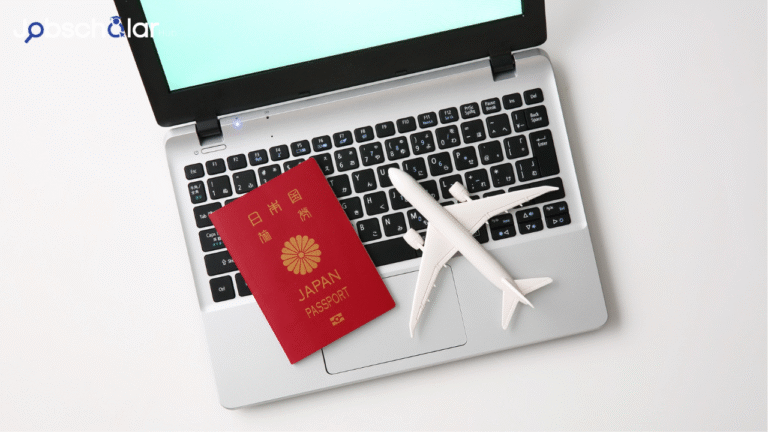Migrating to Australia as a skilled worker is not as simple as packing your bags and booking a flight. It’s a process filled with paperwork, government regulation and that hated points-based system. But here’s the thing — thousands do it every year, and tons of people get their dream jobs in one of the most livable countries in the world.
The challenge? Getting everything right. One error, and you could face delays, rejections or starting all over. That’s why this guide walks you through each step and stage, so you won’t have to struggle through the guessing. From eligibility criteria to visa options and common traps to avoid, this is the road map to turning your Australian dream into reality. Let’s get right into it!
Table of contents
- What is the Eligibility Requirement for Skilled Migration to Australia?
- What Visa Options are there for Skilled Workers?
- How to Apply for a Skilled Migration Visa: The Step-by-Step Process
- Step 1: Make Sure You Meet the Eligibility Criteria
- Step 2 — Obtain a Skills Assessment
- Step 3: Take a test of English proficiency
- Step Four: Make an EOI in SkillSelect
- Step 5: Wait for an Invitation to Apply (ITA)
- Step 6: Submit Your Visa Application
- Step 7: Awaiting Visa Approval & Pre Arrival preparation
- What is the Points Based System for Skilled Migration?
- Common Mistakes to Avoid During the Skilled Migration Process
- Conclusion
- FAQs
- References
- Recommendations
What is the Eligibility Requirement for Skilled Migration to Australia?

An Australian skilled visa is not a free for all. The government has rules to prevent even qualified jurists from getting on the short list. To qualify, here’s what you need:
A. Your Occupation Must Be on the Skilled Occupation List (SOL).
The Skilled Occupation List (SOL) is frequently updated by Australia in order to cover skilled jobs that are in high demand. So if your occupation isn’t on the list, don’t expect it to change in the near future — making it near enough impossible to get a skilled visa. Some of the jobs in demand are:
- Nurse and healthcare provider training
- IT specialists (software engineers/cybersecurity experts)
- Engineers (civil, electrical, mechanical)
- Teachers
- Trades — plumbers, electricians, carpenters
To find out if your occupation is eligible, check the official government list.
B. You Have to Pass a Skills Assessment
Even if your job is on the list, Australia doesn’t take your word for it. You will have to demonstrate that you possess the necessary qualifications and experience through a skills assessment. Every occupation has a specific assessing authority that will assess if your education and work experience are at Australian standards.
C. You Must Fulfill the Age Requirement
In general, you should be less than 45 years old to be eligible for a skilled visa application. Older applicants are not eligible, unless they somehow qualify through an employer sponsorship for an exemption.
D. You Must Have a Good Command of the English Language
You must demonstrate that you can speak, read, and write English well. The most widely accepted tests include the following:
- IELTS (International English Language Testing System)
- PTE Academic (Pearson Test of English)
- TOEFL iBT (Test of English as a Foreign Language)
Even though each visa type has different score trench, your chances of selection is far better if you have a higher score.
You should read: 5 Surprising Jobs for Non-English Speakers Without Fluent English!
E. You Need to Score Enough Points in the Points-Based System
Australia operates on a points-based system of applicant hierarchy. You get points based on:
- Age
- Work experience
- Education
- English proficiency
- Spouse skills (bonus points if your partner is also skilled)
- Australian experience of study or work
You would normally require a minimum of 65 points to qualify, but higher scores increase the likelihood of receiving an invitation.
We think you should read: Working in Australia: Complete Guide
What Visa Options are there for Skilled Workers?

There is no one “skilled worker visa.” Instead, Australia has several possible pathways based on your skills, work experience, and whether an employer is sponsoring you. Here are the main options:
A. Subclass 189 — Skilled Independent Visa
This visa is best for job seekers without employer or state sponsorship
Key requirements:
- You have to be in a profession on the Skilled Occupation List
- You need to score 65 points in the points test
- No employer or state sponsorship required
Pros: PR from day one, which enables you to work and settle anywhere across Australia
You should read: 5 Australian Companies That Sponsor Work Visas
B. Subclass 190 – Skilled Nominated Visa also called Permanent visa
This visa is best for applicants ready to be sponsored by an Australian state or territory
Key requirements:
- Your occupation must be on a state’s priority list
- Must be nominated by an appointed state or territory
- Need minimum 65 points, 5 points for nomination by state
Pros: Permanent residency and faster than the 189 visa.
You should read: Visa Interview Questions You MUST Prepare For — And How to Nail Every Answer!
C. Subclass 491– Skilled Work Regional (Provisional) Visa
This visa is best for people open to living and working in regional Australia
Key requirements:
- It requires a nomination by a regional state or have a family sponsor located in a regional area
- Needs at least 65 points, but nomination also adds 15 bonus points
Pros: 5-year temporary visa, but leads to PR if you live and work in a regional area for at least 3 years
D. Work Sponsored (Subclass 186 & 482)
You might be eligible for one if you have an Australian employer willing to sponsor you. The visa’s under this category are-
- Subclass 186 (Employer Nomination Scheme – ENS). This is a high-skilled professional Permanent visa.
- Subclass 482 (Temporary Skill Shortage – TSS Visa). This visa allows you to work in Australia for 2 to 4 years with a potential pathway to PR.
E. Global Talent Visa (Subclass 858)
This is for highly skilled workers in tech, engineering, medicine, and academia. You don’t require a points test, only evidence you’re recognized internationally in your field.
Check out this related content: Working in Australia: Complete Guide
How to Apply for a Skilled Migration Visa: The Step-by-Step Process

Applying for an Australian skilled visa can be a daunting process. Here’s the step-by-step process:
Step 1: Make Sure You Meet the Eligibility Criteria
First things first, make sure you qualify. To be sure you meet the eligibility criteria, ensure-
- You are on the Skilled Occupation List (SOL) for your occupation.
- You will have satisfied the age criteria (below 45 years of age)
- You have below enough professional work experience
- You fulfill the English language requirements
- You have a minimum of 65 points (if you are applying for points-based visas)
Step 2 — Obtain a Skills Assessment
Most skilled visas require a skills assessment which is compulsory. An assessing authority that verifies whether your qualifications and work experience are comparable to Australian standards carries out this process. The assessing body differs for each occupation.
Processing times vary, but it can take anywhere from weeks to months, so you should plan ahead.
Step 3: Take a test of English proficiency
Most skilled visas require evidence of English proficiency. You can take tests like:
- IELTS (International English Language Testing System)
- PTE Academic (Pearson Test of English)
- TOEFL iBT (Test of English as a Foreign Language)
Read also: The Role of Immigration Lawyers: Do You Need One?
Step Four: Make an EOI in SkillSelect
SkillSelect is Australia’s online system for skilled migration. You don’t apply for a visa yet—you simply communicate your interest. It’s like signing up in a talent pool so that the Australian government or employers can choose you.
Your EOI includes:
- Personal details
- Employment experience & credentials
- Skills assessment results
- English test score
EOIs are ranked based on the points system. The more points you have, the better your odds of receiving an invitation.
Step 5: Wait for an Invitation to Apply (ITA)
Upon submitting your EOI, you have to wait for an invite from the Department of Home Affairs. This occurs in the case of standard invitation rounds. If your occupation is in demand and you have a high points score, you might receive an ITA more quickly.
You’ll have 60 days to prepare your full visa application, if invited.
Read Also: Germany Transit Visa: All You Need to Know Before Your Stopover
Step 6: Submit Your Visa Application
When you are invited you may formally apply for your visa online. This step requires:
- Personal docs (passport, birth certificate)
- Skills assessment results
- English test score
- Health & character checks (medical exams & police clearance)
Processing times differ by visa category. Others may take more than a year and some are only a few months.
Step 7: Awaiting Visa Approval & Pre Arrival preparation
If approved, you’ll be notified of your visa grant notice which will contain:
- Visa validity period
- Your visa conditions
- Your entry deadline
You can now migrate to Australia, look for a job, and begin your new life!
Read this too: Australian Visas: Choose the Perfect Path for Your Migration
What is the Points Based System for Skilled Migration?

The second system is points-based which Australia also uses to rank skilled visa applicants. The higher your score — the better your chances of getting an invitation. The minimum necessary is 65 points, but the better your points, the greater your chances of success.
Here’s a breakdown of how points are calculated:
A. Age (Maximum: 30 Points)
The best 12 months in Canada in the last 5 years (0-10 points depending on the experience/purpose) Your age at the time of application (0-10 points)
18–24 years – 25 points
25–32 years - 30 points (points highest)
33–39 years – 25 points
40–44 years – 15 points
45+ years – 0 points (ineligible)
B. Proficiency in the English Language (Maximum: 20 Points)
Your points depend on your English test score:
Working English (IELTS 6.0) – 0 points
Good English (IELTS 6.0) – 5 points
IELTS 8.0 – 20 points (highest points)
C. Work Experience (Maximum: 20 Points)
You earn points for offshore and Australian work experience.
Overseas experience (in your nominated occupation):
3–5 years – 5 points
5–8 years – 10 points
8+ years – 15 points
Australian work experience:
1–3 years – 5 points
3–5 years – 10 points
5–8 years – 15 points
8+ years – 20 points (most points)
D. Education Qualifications
Your points based on your highest qualification:
PhD → 20 points
Bachelors or Masters Degree → 15 points
Certificate or trade qualification → 10 points
No formal education –> 0 points
E. Bonus Factors for Extra Points
You can increase your score with:
- State nomination (Subclass 190 visa) → 5 points
- State nomination (Subclass 491 visa) → 15 points
- Skills of your partner (if they are skilled too) → 5–10 points
- Australian study experience → 5 points
What Is a Competitive Score?
- 65 points → Base requirement
- 75+ points → Good chance of invitation
- 90+ points→ Top rated (speedier invitations)
Now that you know how the process works, and the points are calculated, the last thing to cover is a few common mistakes to avoid, so that you do not get caught up in delays or rejections!
Check out this related content: The Ultimate Guide to Migrating to Australia: What You Must Know.
Common Mistakes to Avoid During the Skilled Migration Process

Although the process to apply for a skilled migration visa is relatively simple if you know what you are doing, there are a few common mistakes that can lead to costly delays or even a refusal. Follow these practices for a smooth process:
A. Failing To Double-Check Skills Assessment Requirements
Every occupation has its own requirements for the skills assessment. It is important to note that not all applicants have the misconception of assuming their qualifications are equivalent or are suitable for Australia. Always check the assessing authority’s guidelines and submit the right documents to avoid the rejections or delays.
B. Not Getting Invited to the Party
In case your Expression of Interest (EOI) does not get selected in the first round, dont worry. But you have to keep your EOI current Sometimes they just forget to update their contact details, or they miss a round and they don’t resubmit. Be consistantly monitoring your SkillSelect profile!
C. Points Scored Incorrectly
The points system used for Australia can be a bit tricky and a lot of applicants get their points score wrong. Maybe you overestimated your command of English, your work experience, or your education level. Double-check your points against the official points calculator before submission
D. Insufficient Evidence
One of the major reasons for visa refusals is Incomplete supporting documents. Use confirmatory documents of your work experience, education certificates, and English test scores, etc and submit complete records. Failing to obtain even one document can result in long delays, or worse, denied visas.
E. Failure to Abide by Visa Conditions Post-Approval
When your visa is approved, follow absolutely all of the visa grant notice conditions. For example, violating the conditions of your visa — working somewhere you are not allowed to or relocating outside the specified region — could result in your visa being canceled.
Refraining from these mistakes will put you one step closer towards goal of moving to Australia as a skilled migrant.
Considering bringing your familyu? Read: Bringing Your Family Members to Australia: Family Migration
Conclusion
Until you are a skilled worker, do not forget that moving to Australia is a journey. Taking the right steps, and steering clear of the common pitfalls, will vastly improve your chances of success. Australia is home to so many benefits for skilled immigrants, whether you are looking for better job opportunities, great lifestyle, or simply an adventure in a different country.
Just incase yiu are interested in the UK, you should read: Best UK Jobs With Visa Sponsorship
FAQs
Processing times range from a few months to more than a year depending on the type of visa and the individual situation.
Yes, you may be eligible to apply through Skilled Independent Visa (Subclass 189) without a job offer, provided you meet the requirements.
Health Insurance is not required for visa application, but advisable during your stay in Australia.
If you fail to reach the 65 points, you will not be in a position to receive an invite, and you will have to work on increasing your score.
Yes, you can include spouse and dependent children in your visa application.
References
immihomeaffairsgov.au– migrate to Australia as a skilled worker
Australianskilledmigration.com.au– Migrate and migration to Australia as a skilled worker






